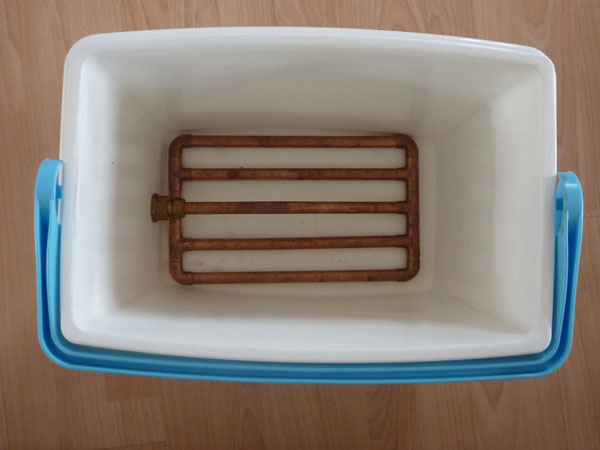The Mash Tun

There are numerous mash tuns available on the market. The picnic cool box with a manifold in the bottom connected to a tap on the outside to separate the grain and wort are probably the most common. The clear advantage of using an insulated box is the very fact that it’s insulated, with mash temperature being such an important part of the brewing process, you’ve got a product ready made to hold temperate. The manifold in the bottom comes in several variations such as a copper pipework system with holes drilled into the pipes to allow wort to flow through but not grain A stainless steel braided hose is another option. The main objective is whichever mash tun you use it needs to be able to separate the liquid from the grain.
Another type of mash tun would be a vessel with a false bottom an outlet is connected below the false bottom and only the wort can get past this false bottom. The simplest form of creating a mash tun like this is to drill hundreds of small holes (smaller than your crushed malt) in the bottom of a fermenting bin, this is in effect is the false bottom. This is then inserted into a fermenting bin with a tap at the bottom and the whole thing wrapped up in insulation or blanket so the mash tun can retain temperature. This method of building a mash tun is as basic and cheap as it gets but is still very effective and will produce beer just as good as any other mash tun.
The next variation for mash tuns are those that can be heated. So far the options would only really be good to do single infusion temperature mashes. If you wanted to perform a step mash then it would be difficult to raise the temperature in the mash up through the necessary increments. A vessel that can be heated would be able to perform a step mash and options for these often are constructed from stock pots with false bottoms that can be heated via a burner. In essence they perform the exact same function as the other mash tuns we talked about apart from the construction material.
